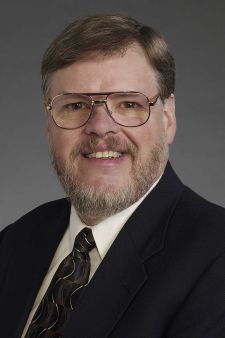
Frederic H. Fahey, D.Sc., Division of Nuclear Medicine, Children's Hospital Boston, is the Scientific Program Committee Chair for the Society of Nuclear Medicine.
The theme of SNM’s 54th Annual Meeting to be held on June 2–6 in Washington, D.C., this year is “SNM: Advances in Personalized Medicine.” As part of the conference’s goal of presenting recent improvements in the diagnosis and treatment of life-threatening cancer, heart disease and brain disorders, it has initiated a new program, InfoSNM, to leverage IT for more effective use of data in the research, educational and clinical setting. The InfoSNM program is designed to allow attendees to participate in interactive computer presentations and educational offerings on the novel applications of computers and information science in molecular imaging and nuclear medicine.
Imaging Technology News (ITN) spoke with the SNM Scientific Program Committee Chair Frederic H. Fahey, D.Sc. of Children's Hospital Boston Division of Nuclear Medicine about what InfoSNM will offer clinicians.
ITN: There is a new feature this year at SNM called the InfoSNM program. What is the objective of this program?
Frederic H. Fahey (FF): In the last few years, computers have become more important in all aspects of nuclear medicine and molecular imaging, including education and research, and there has in the past not really been an appropriated forum within the SNM meeting to present that kind of information or help those who are trying to come up to speed on the new advances in IT in nuclear medicine and molecular imaging. So I tried to provide such a forum.
This new program is broken into two parts. One will have an educational component – a computer classroom that will run some workshops that deal with general things that aren’t specific molecular imaging. For example, since we’re in Washington, D.C., the National Library of Medicine will give a workshop on how to do better Pub Med searches. And there will be tutorials on the use of other processing and image analysis tools, for example, the uses of NIH image J as it applies to processing nuclear medicine images – that is a freeware image processing package.
The other part of the program is that we have entertained a new abstract category this year. Usually abstracts that are submitted are trying to elicit new science. This was not necessarily new science but novel approaches of using computers in the context of science or education or in the clinic. We are looking at new applications to be used within the context of nuclear medicine and molecular imaging, and we accepted 23 abstracts.
ITN: Will the combining of nuclear medicine and molecular imaging with IT address developments in personalized medicine?
FF: It touches on personalized medicine, yet it’s broader than that. In clinic, computers allow you to have access much more data about a particular patient when you are going to do a study on them. And as we move from the lab and molecular imaging into the clinic we will have access to that kind of information. Also, just more efficient use of computers as a research tool and educational tool.
ITN: SNM will feature seminars that cover emerging clinical applications of SPECT/CT and hot topics in PET/CT. Specifically, what are these applications and topics?
FF: PET/CT over the last few years has become very popular because it has addressed a particular need in oncologic PET, being able to correlate both disease and normal uptake in these patients and allow a more accurate reading of the data. Because of that, there is more access to PET/CT and we are going to see at this meeting the application of PET/CT in other arenas besides oncology, using PET/CT in research on imaging arthrosclerosis or inflammation or infection.
We will see SPECT/CT applications beyond cardiology. The role of SPECT/CT is at an earlier phase of evolution, and we will see some applications in cardiology, but as well in oncology and general nuclear medicine where SPECT/CT also has a role.


 November 12, 2025
November 12, 2025 









